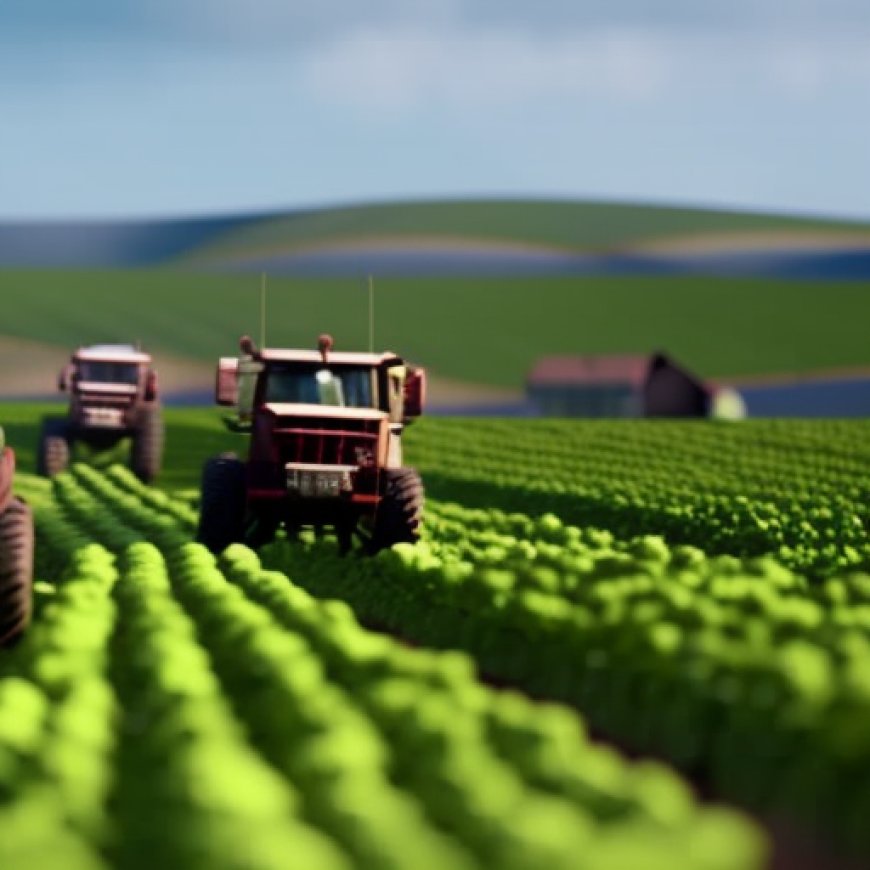Farmers ride tractors through Lebanon to fight proposed development on farmland


Wilson County Planning Commission Considers Proposal for Industrial Park in Tuckers Crossroads
LEBANON, Tenn (WSMV) – The Wilson County Planning Commission is considering a contentious proposal Friday that could change the landscape of Tuckers Crossroads in Wilson County.
If approved, a new industrial park would be built on 1,400 acres of currently agricultural land. Proponents argue it will bring more jobs to the area, but many residents believe the costs outweigh the benefits.
Concerns Raised by Local Residents
- Hundreds of people in Tuckers Crossroads are concerned about the potential rezoning of farmland for light industrial use.
- They fear the changes it would bring to their rural community.
- Residents worry about the presence of semi-trucks around their children.

(WSMV)
Houston Neal, a farmer in Wilson County said he hopes their town stays agricultural for future generations.
“We just feel like it just doesn’t fit well, or the community doesn’t really bring anything positive there,” he said.
Community Protest and Preservation Efforts
- The proposal has sparked widespread concern among locals.
- Residents have signed a petition and organized protests by driving tractors and trucks from the Wilson County Fairgrounds to the courthouse.
- They are calling on county leaders to preserve their neighborhood’s character by keeping it farmland and residential.
“We have beautiful cows, beautiful farmland,” Hodges said. “Our town is just so sweet, so beautiful, so protected.”
The community hopes their unity will make a difference.
“The community has just really come together — the farming community, but not just the farming community, the residential community out there. People that live out their work in Nashville. It’s a quality of life for them when they can drive by a farm and there’s cows and kids and a hay field, or you drive by and there’s an industrial park with huge warehouses,” said Perry Neal, a full-time farmer in Tuckers Crossroads.
Copyright 2024 WSMV. All rights reserved.
SDGs, Targets, and Indicators Analysis
1. Which SDGs are addressed or connected to the issues highlighted in the article?
- SDG 8: Decent Work and Economic Growth
- SDG 11: Sustainable Cities and Communities
- SDG 15: Life on Land
The article discusses the proposal to build an industrial park on agricultural land, which has sparked concerns among residents. This issue is connected to SDG 8 as it relates to promoting inclusive and sustainable economic growth, employment, and decent work for all. It is also connected to SDG 11, which focuses on making cities and human settlements inclusive, safe, resilient, and sustainable. Additionally, the issue is related to SDG 15, which aims to protect, restore, and promote sustainable use of terrestrial ecosystems, sustainably manage forests, combat desertification, halt and reverse land degradation, and halt biodiversity loss.
2. What specific targets under those SDGs can be identified based on the article’s content?
- Target 8.2: Achieve higher levels of economic productivity through diversification, technological upgrading, and innovation.
- Target 11.7: By 2030, provide universal access to safe, inclusive, and accessible, green, and public spaces, particularly for women and children, older persons, and persons with disabilities.
- Target 15.9: By 2020, integrate ecosystem and biodiversity values into national and local planning, development processes, poverty reduction strategies, and accounts.
Based on the article’s content, the proposal for the industrial park aims to bring more jobs to the area, which aligns with Target 8.2 of SDG 8. The concerns raised by the residents about the changes to their rural community highlight the importance of preserving safe, inclusive, and accessible green spaces, which relates to Target 11.7 of SDG 11. Additionally, the potential rezoning of farmland raises concerns about the integration of ecosystem and biodiversity values into local planning and development processes, which is addressed by Target 15.9 of SDG 15.
3. Are there any indicators mentioned or implied in the article that can be used to measure progress towards the identified targets?
- Indicator 8.2.1: Annual growth rate of real GDP per employed person.
- Indicator 11.7.1: Average share of the built-up area of cities that is open space for public use for all, by sex, age, and persons with disabilities.
- Indicator 15.9.1: Progress towards national targets established in accordance with Aichi Biodiversity Target 2 of the Strategic Plan for Biodiversity 2011-2020.
The article does not explicitly mention any indicators related to the identified targets. However, progress towards Target 8.2 can be measured using Indicator 8.2.1, which tracks the annual growth rate of real GDP per employed person. Indicator 11.7.1 can be used to measure progress towards Target 11.7 by assessing the average share of the built-up area of cities that is open space for public use. Indicator 15.9.1 can be used to measure progress towards Target 15.9 by evaluating the progress made towards national targets established in accordance with Aichi Biodiversity Target 2.
4. Table: SDGs, Targets, and Indicators
| SDGs | Targets | Indicators |
|---|---|---|
| SDG 8: Decent Work and Economic Growth | Target 8.2: Achieve higher levels of economic productivity through diversification, technological upgrading, and innovation. | Indicator 8.2.1: Annual growth rate of real GDP per employed person. |
| SDG 11: Sustainable Cities and Communities | Target 11.7: By 2030, provide universal access to safe, inclusive, and accessible, green, and public spaces, particularly for women and children, older persons, and persons with disabilities. | Indicator 11.7.1: Average share of the built-up area of cities that is open space for public use for all, by sex, age, and persons with disabilities. |
| SDG 15: Life on Land | Target 15.9: By 2020, integrate ecosystem and biodiversity values into national and local planning, development processes, poverty reduction strategies, and accounts. | Indicator 15.9.1: Progress towards national targets established in accordance with Aichi Biodiversity Target 2 of the Strategic Plan for Biodiversity 2011-2020. |
Source: wsmv.com








